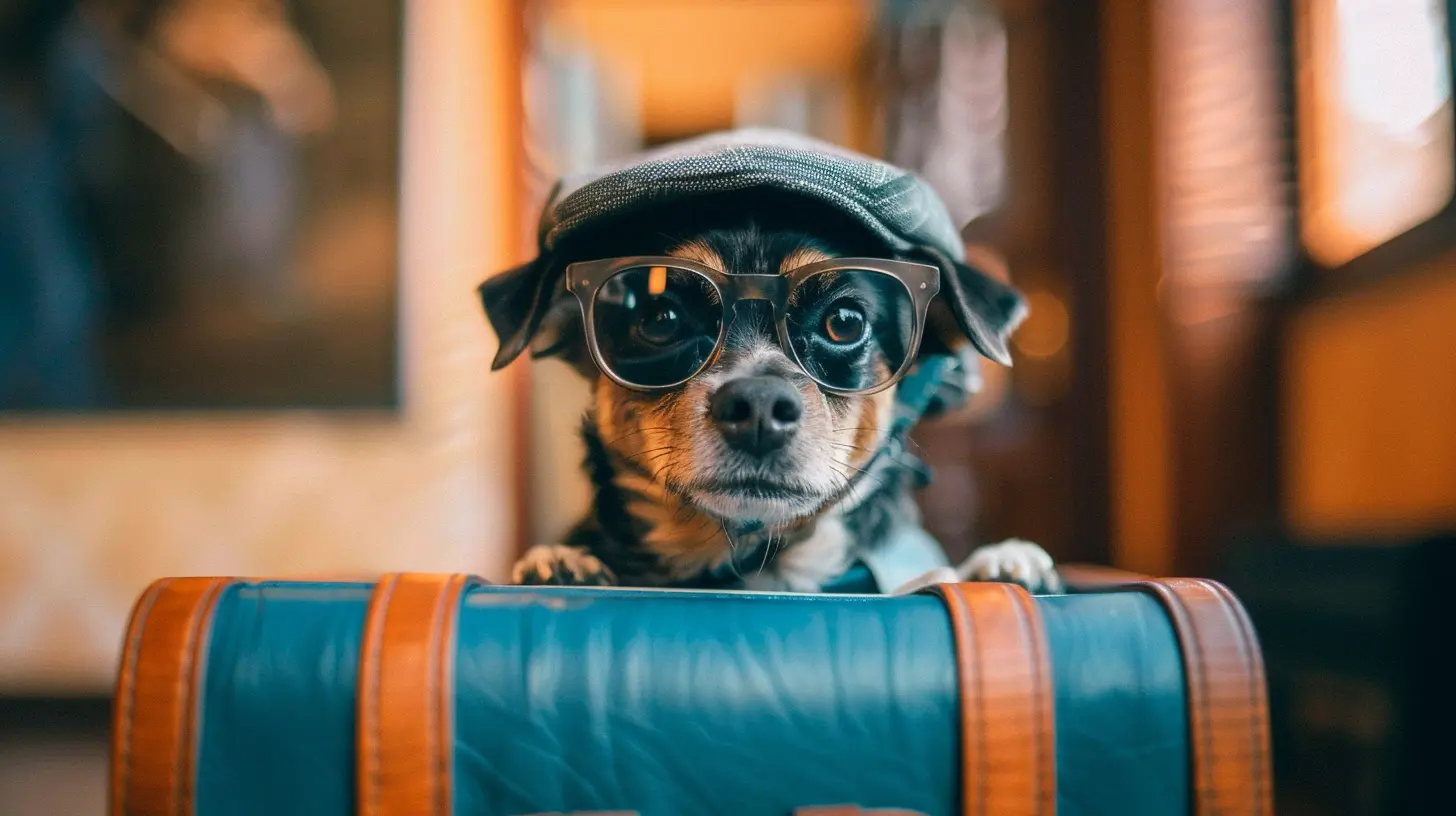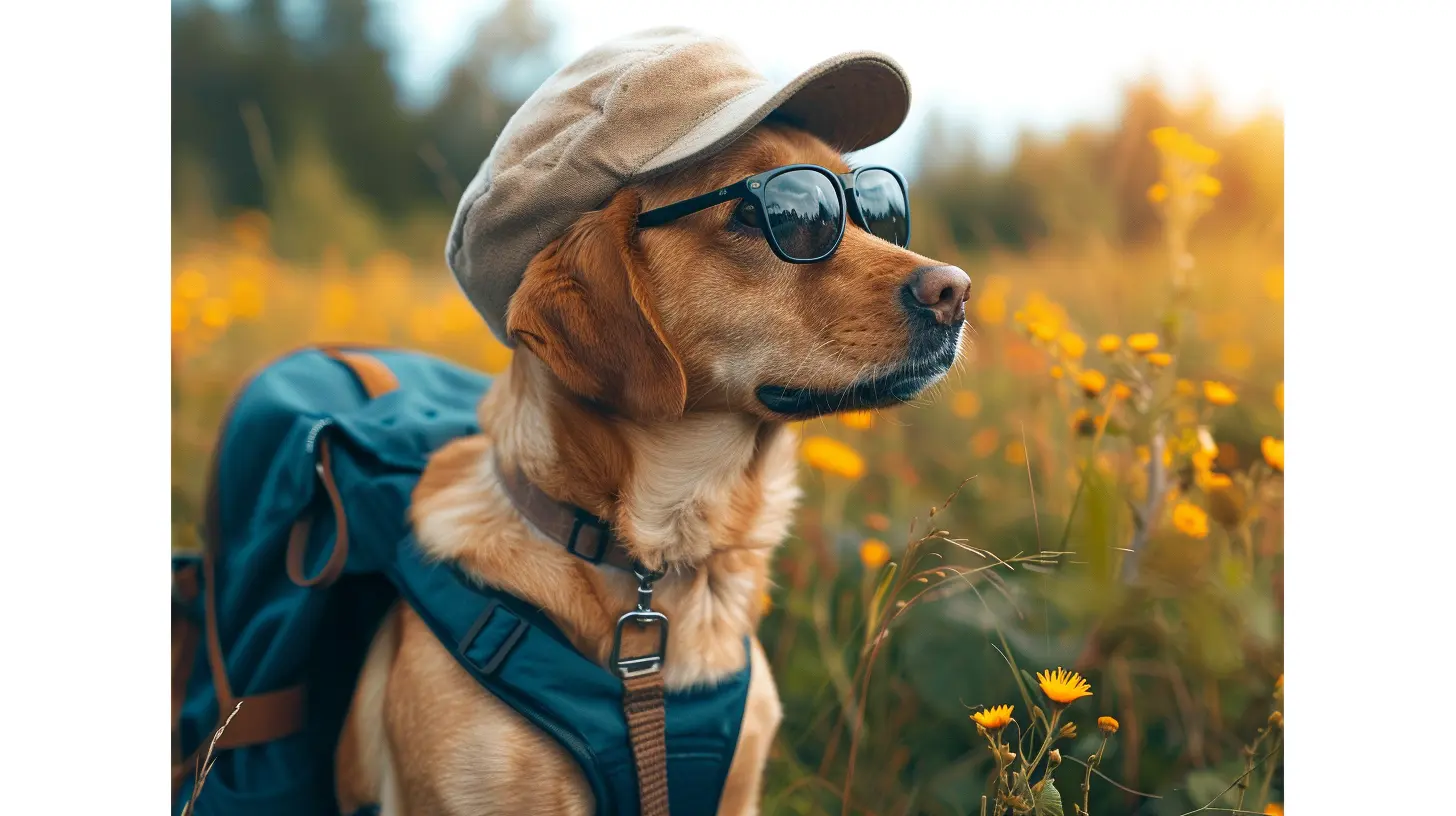Cultivating a Pet Travel Routine That Works for You
29 May 2025
Ever dreamed of hitting the road with your furry companion by your side? Maybe you’ve seen those Instagram-perfect shots of dogs hanging their heads out of car windows, tongues flapping in the breeze. Or perhaps you’ve fantasized about your cat strolling through an airport with all the grace of a seasoned traveler. But let’s be real—traveling with pets isn’t always as effortless as it looks. It takes careful planning, patience, and a solid routine to make your trips stress-free.
So, how do you cultivate a pet travel routine that works for you? Buckle up, because we’re about to embark on an adventure filled with tips, tricks, and a little bit of mystery. 
Why a Travel Routine for Your Pet Matters
You wouldn’t jump on a plane without packing a bag, right? The same logic applies to your pet. Unexpected challenges—like motion sickness, anxiety, or even simple restlessness—can quickly turn a dream trip into a nightmare. A travel routine helps ease your pet into new environments, ensuring they feel secure and comfortable wherever you go.
Understanding Your Pet’s Travel Personality
Every pet has a unique personality, and that plays a huge role in how they handle travel. Think about it—some dogs eagerly jump into the car, while others tremble at the sight of the carrier. Cats, known for their love of routine, can be especially sensitive to change. Before you start planning your next trip, take a step back and observe your pet’s behavior.- The Adventurer – These pets love new experiences and adapt quickly.
- The Nervous Traveler – Easily stressed, may need extra preparation and reassurance.
- The Homebody – Prefers staying in familiar surroundings and might need conditioning for travel.
Figuring out where your pet falls on this spectrum helps you tailor a travel routine that suits their needs. 
Building a Travel-Friendly Routine
1. Start with Short Trips
Ever taken a car ride with a pet that won’t sit still? If road trips feel chaotic, it’s probably because your pet isn’t used to them. Begin with short drives around the neighborhood—just enough for your pet to become familiar with the experience. Gradually increase the distance until they’re comfortable with longer journeys.For air travel, do test runs with their carrier. Let them sit inside with treats and toys, turning it into a safe space.
2. Create a Packing Checklist
Just like humans, pets have their own travel necessities. Forgetting essential items can throw off your entire routine. A checklist ensures you have everything:✔ Travel carrier or crate
✔ Leash and collar with ID
✔ Food and collapsible bowls
✔ Medications (if needed)
✔ Favorite toys or blankets
✔ Waste bags or litter supplies
✔ Grooming essentials
Bonus tip: Keep an emergency pet first-aid kit handy. Accidents happen, and being prepared makes all the difference.
3. Stick to Feeding Schedules
A sudden change in diet or feeding times can lead to digestive issues—something you definitely don’t want on a long trip. Try to maintain your pet’s regular feeding routine. If traveling by plane, feed them a few hours before departure to avoid motion sickness.Pro tip: Carry bottled water from home or filtered water. New water sources might upset sensitive stomachs.
4. Master the Art of Rest Stops
For road trips, plan pit stops every 2-3 hours. Pets need bathroom breaks, a little stretch, and some water. Dogs especially benefit from quick walks, reducing their anxiety and pent-up energy.Air travel? Look for pet relief areas in airports. Some airlines even allow pets in designated lounges, so check ahead.
5. Acclimate Before the Big Trip
Flying for the first time? Introduce your pet to their carrier weeks before the trip. Let them nap inside, play with their toys, and associate it with positive experiences. The same goes for car travel—let them sit in the parked car before driving anywhere.6. Book Pet-Friendly Accommodations
You’d be surprised how many travelers arrive at their destination only to realize their hotel doesn’t allow pets. Always double-check pet policies before booking accommodations. Look for pet-friendly hotels, Airbnbs, or even campgrounds that welcome four-legged guests.Some places go the extra mile with pet beds, treats, and play areas—making your pet feel right at home. 
Handling the Unexpected
Motion Sickness and Anxiety
Some pets have stomachs that aren’t built for travel. If you notice drooling, whining, or vomiting, motion sickness could be the culprit. Speak to your vet about anti-nausea medication or try natural remedies like ginger treats (safe for dogs).For anxiety, calming sprays, pressure wraps, or CBD treats (vet-approved, of course) can help ease nerves. Playing soft music or bringing a familiar-smelling item can also provide comfort.
Lost Pet Protocol
No one wants to think about losing their pet, but it’s better to be safe than sorry. Ensure your pet has proper ID tags, a microchip, and up-to-date contact information. Some pet GPS trackers can be lifesavers in case they slip away in an unfamiliar place.Handling Airline Restrictions
Every airline has its own pet policy—some allow small pets in the cabin, while others require them to fly in cargo. Research in advance to avoid last-minute surprises. Some airlines have breed restrictions, temperature regulations, and even documentation requirements.Making Travel an Enjoyable Experience
At the end of the day, the goal isn’t just to survive traveling with your pet—it’s to make it enjoyable for both of you. The more positive experiences you create, the more your pet will associate travel with excitement rather than stress.Reward Good Behavior
Positive reinforcement works wonders. Whether it’s a treat, cuddles, or verbal praise, let your pet know they’re doing great throughout the trip.Keep Adventures Pet-Centered
Sure, you might want to check out that five-star restaurant, but will your pet be comfortable? Try to choose activities where they can tag along—whether it’s a pet-friendly beach, park, or hiking trail. After all, they’re part of the adventure too!Final Thoughts
Cultivating a pet travel routine isn’t about following a strict set of rules—it’s about creating a rhythm that suits both you and your furry co-pilot. And trust me, once you find that balance, traveling together becomes second nature.So, whether it’s a spontaneous weekend getaway or a cross-country road trip, having a solid routine ensures your pet stays happy, safe, and stress-free. Ready to hit the road? Your pet is counting on you to make it an adventure worth remembering.
all images in this post were generated using AI tools
Category:
Pet Friendly TravelAuthor:

Shane Monroe
Discussion
rate this article
3 comments
Kristen Gomez
This article offers practical tips for making pet travel smoother and more enjoyable. I appreciate the emphasis on routine, as consistency can significantly reduce stress for both pets and owners. However, including more personal anecdotes or real-life examples could enhance the connection with readers and their own travel experiences.
June 6, 2025 at 3:21 PM

Shane Monroe
Thank you for your feedback! I appreciate your suggestion about including personal anecdotes to create a stronger connection with readers. I'll consider adding more real-life examples in future articles!
Kael Romero
Pawsitively perfect getaway plan!
June 4, 2025 at 4:56 PM

Shane Monroe
Thank you! I'm glad you enjoyed the article! 🐾✨
Diesel Marks
Great tips! Establishing a pet travel routine not only reduces stress for both owner and pet but also enhances the overall travel experience. Excited to try these strategies!
June 2, 2025 at 2:45 AM

Shane Monroe
Thank you! I’m glad you found the tips helpful. Wishing you and your pet fantastic travels! 🐾✈️



